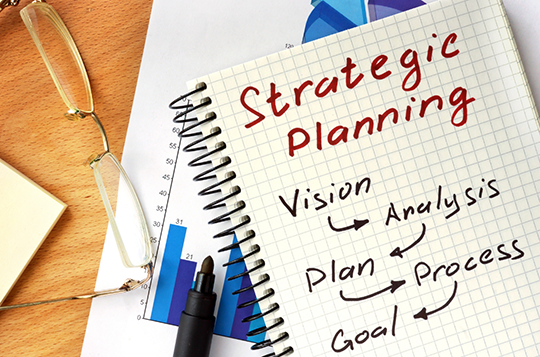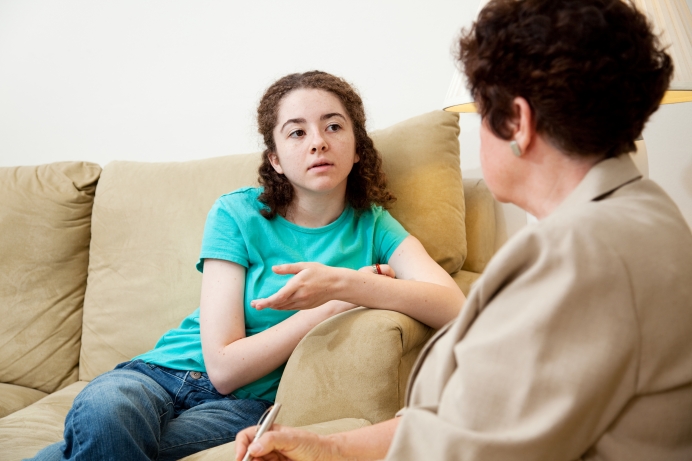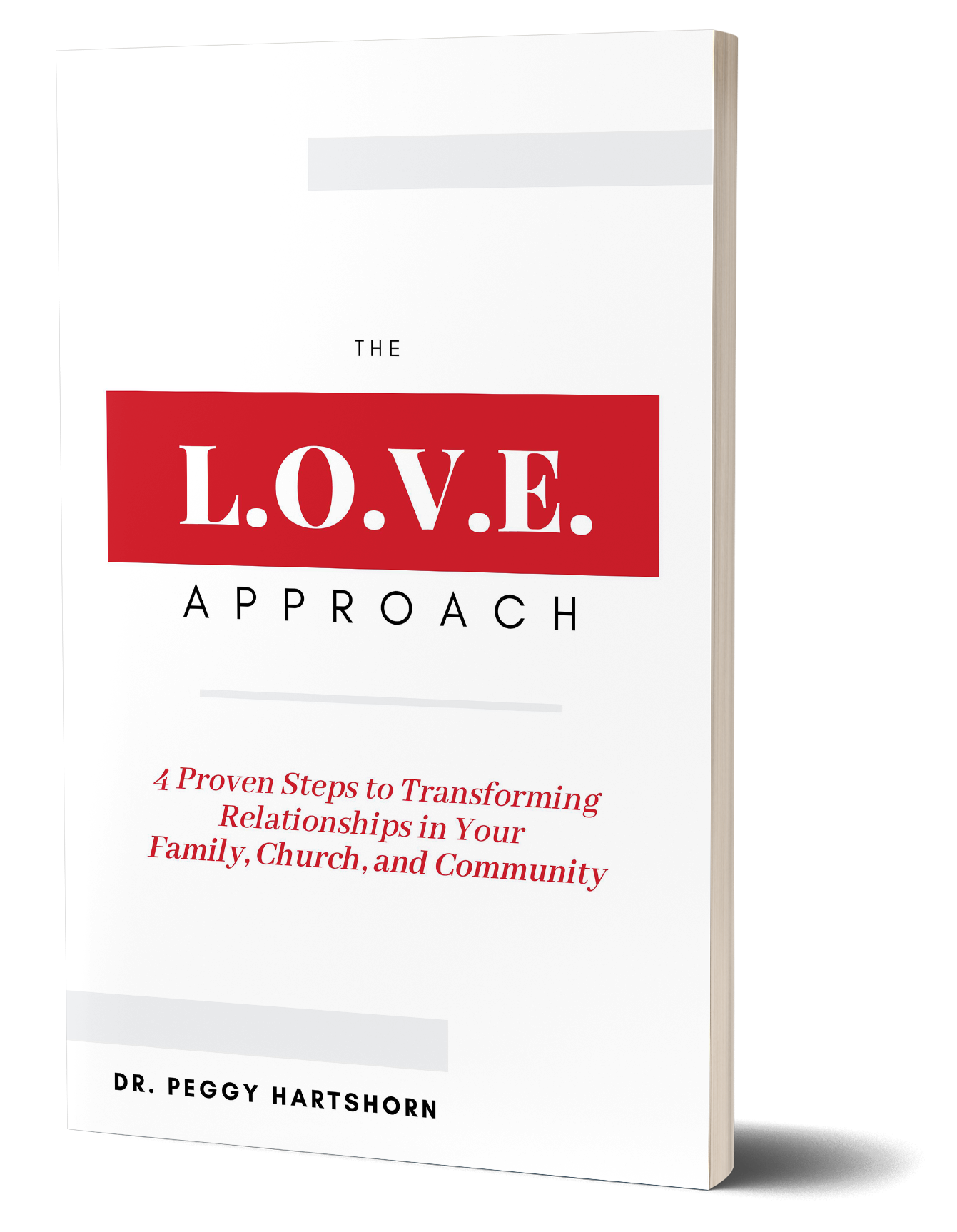Displaying items by tag: Best of Heartbeat Fall/Winter 2021
Strengthening the Bond between Teens and their Parents
by Melissa Hopper
In an age where technology is king and information is easily accessible, it’s no surprise that young people are becoming more autonomous at an earlier age. Today’s teens are enjoying higher levels of independence than ever before, and it seems like they are comfortable leaving their parents out of big decisions like getting an abortion or accessing medical care. Although teen birth rates are decreasing, lack of parental support means that teens experience increased pressure to choose abortion over parenting.
Strategic Planning as Worship Work
by Sue Baumgarten
Thinking strategically is not one of my top strengths. By nature, I’m a connector and a communicator, an activator and a mentor. But with almost 3 decades of board service, (respectful of term limits and built-in breaks) and also serving as an Executive Director for a few years, I am no stranger to Strategic Planning. And, I currently serve on the National Maternity Housing Coalition (NMHC) leadership council and we’re in the middle of Strategic Planning as I write this.
Celebrating 50 Years of Heartbeat International
by Betty McDowell, LSW, LAS
Vice President of Ministry Services, Heartbeat International
2021 is a special year for Heartbeat as we announce our 50th birthday. So many things come to mind as we reflect on the original founders’ hearts to offer continuous learning for those serving in the pregnancy help community. While we originally called each annual conference “Academy” we are sure our founders could not have imagined all that is being accomplished today whether in person, online, or in print.
How Providing Alternatives to Contraceptives Makes Us More Credible
by Jennifer Wright, Editor/Writer
Heartbeat International
Medical science is truly amazing to me. I’m constantly surprised by how well we as a society have come to understand how the human body works and how we can help the body return to health.
But we don’t always work to improve a body’s function with the knowledge we’ve uncovered. Sometimes, our society tries to break something—like a woman’s fertility—in the name of fixing a problem that may or may not have something to do with her sexuality.
It confuses me that stopping a woman’s fertility—a sign of her body working the way it should—is a solution that the medical community is willing to offer so easily to women with acne, endometriosis, PCOS, hormonal imbalances, and more. It’s so common in fact that, as the Guttmacher Institute reports, about 60% of all women of reproductive age are currently using a contraceptive method.
Even when a woman requests birth control from her doctor for the purpose of sex without children or to protect from STI/STDs, the result is rarely, if ever, a completely positive experience.
I hear stories consistently from women about the various side-effects of hormonal contraceptives. Massive weight gain or loss, changes in mood and sexual desires, intense pain, bleeding – it’s no wonder “green, organic” methods of family planning, like fertility awareness-based methods are on the rise.
But then I am reminded of how many doctors and medical professionals treat hormonal contraceptives. It’s not uncommon for a doctor to prescribe a teenage girl with menstrual cramps some form of birth control. After all, the assumption is that she’s probably having sex or about to start anyway, so it’s a good idea to prevent pregnancy too. At least that’s the reason most cite. (Nevermind the psychological effects known to accompany casual sex.)
It can be difficult to find a doctor willing to explore other avenues of treatment.
A few of my married friends dealing with endometriosis have discovered this. After discussing with their doctors their hopes to start raising a family, they are still told that their best treatment option is hormonal birth control. One was even told her period was the real problem and the only way to fix her symptoms was to halt it.
When the world is so dead set (and I mean that in all it’s implications) on preventing children, who is willing to stand for life and women?
We are.
For these and many reasons, Heartbeat’s Commitment of Care and Competence states “We do not offer, recommend or refer for abortions, abortifacients or contraceptives. We are committed to offering accurate information about related risks and procedures.” (Click here for Heartbeat's full official statement.)
Hormonal methods can serve as abortifacients and have negative side effects for women, and it’s been proven that even barrier methods make individuals more likely to engage in “risky” sexual behavior that could lead to an unintended pregnancy, and sometimes, as a result, an abortion. The pregnancy help movement is committed to other solutions – better solutions – for women. It’s one of the primary reasons I love being a part of this movement.
When a pregnancy help organization provides medical services (STI/STD testing, well woman care, ultrasound, etc.) without providing contraceptives, it supports women more than any of the doctors or medical centers out there willing to “solve” a problem by breaking a working part of a woman’s body. Even more, that organization is ready to give a woman the holistic spiritual and emotional care she deserves to make the best decisions for herself that are healthy and empowering - true reproductive healthcare.
Women are waking up to the dangers of hormonal birth control and are relieved to have better options!
Through the compassionate care of the pregnancy help movement and strong sexual risk avoidance programs, a woman is emboldened to make positive choices for her future. Maybe she will find the strength to leave an unhealthy relationship, draw safer and healthier boundaries, or recognize her own self-worth in Christ that she’s never seen before — all because she was offered something different than the secular mainstream line of “just take this pill," "don't think about it," "safe sex."
Nothing beats the credibility that we gain with our clients when we prioritize them, address their real issues, and treat them holistically without treating their fertility as a problem to be solved.
For more information and FAQs about Heartbeat International's official statement on the provision of contraceptives by pregnancy help organizations, click here.
Dealing with COVID Fatigue
by Betty McDowell, Vice President of Ministry Services
Heartbeat International
Recently I came across the term “COVID Fatigue.” I am not talking about one of the many symptoms of coronavirus but rather a collective fatigue we all feel living through this pandemic. We are tired of lockdowns, masks, quarantines, social distancing, uncertainties, conflicting information, and many of us are feeling frustrated, isolated, fearful, restricted, and frazzled. Moreover, while many of us were hopeful in the spring, this has gone on longer than many of us have expected. At this point, many have given up saying, “when things get back to normal, we will …”
Woven into our COVID fatigue is the accumulation of loss. All of us have suffered loss through this time. Loss of incomes, jobs, vacations, family reunions, graduations, weddings, welcoming new babies, and for some of us the loss of relationships through death. During this time when funerals and gatherings are limited or postponed, even grief and closure can be put on hold. Let us be real, there have been moments when the temptation to slip into despair is difficult to overcome.
All that said, there are good things happening too. We don’t have to fall into, or even worse, live in despair. What we do need to do is find ways to live well today, and help our loved ones do the same.
Are you or someone you care about struggling today?
Below are some practical ways to address the struggle, mourn losses, and take steps to a better today:
Do not ignore the accumulative loss in your life. Take time to review your loss and bring these disappointments before God in prayer. Record loss in your journal where you can pour out your feelings and experiences – not only can this be therapeutic, but it can also provide a way to look back in your life to see how the Lord brought you through this difficult season.
Check your self-talk. If you find phrases in your self-talk like, “just give up,” “it’s not worth it,” “why bother,” “the best is over” or any other language in the despair category, BEWARE! We have a spiritual enemy who loves to take advantage of our fatigue and grief. Recognize that while we are in a pandemic we are also in a spiritual battle. Turn to God for strength, and do not surrender your heart.
Choose Gratitude. Gratitude and anxiety cannot co-exist. It’s true. Just try to be grateful and anxious at the same time – you cannot do it! Choose to kick out despair and live in gratitude. Focus on the blessings you have in the present moment and set your heart on the hope for a brighter future.
Tell yourself the truth. This is not the end of things. You are not alone. The pursuit of life and joy is still possible. God is in control. God has a plan and a purpose for you during this time and beyond.
Exercise. Even a short walk can help reset mind, soul, and body. Exercise can help relieve stress and release endorphins helping you feel better and contribute to your overall health.
Talk with friends, listen to worshipful music, memorize scripture, read inspiring books. Find that thing that helps bring you out of despair and dive into it. Take advantage of extra time to find those things that fill your heart. We’re all having to pour out a lot right now, but that only works if you are filling up.
Purposely choose hope. Vietnam POW Ken Cordier shares how he and his fellow prisoners placed bets on when their imprisonment would end. Several of the men placed their bets on upcoming holidays or birthdays. When those dates came, and their release had not come they became distraught and did not fare well as prisoners. Ken Cordier chose a date several years away. He decided he would hold out hope for a future and put his trust in God to get him through one day at a time. Ken purposely chose hope and so can you. You see, hope isn’t about expecting everything to be back to normal tomorrow. Hope is about trusting that God will sort it all out in His time.
And make no mistake, He will. You can depend on it.
I’ll leave you today with Psalm 46, a psalm I spent time reflecting on in my prayer time recently. Perhaps you can take time to sit with it in prayer today. After all, now is a time of opportunity to “Be still and know” who God is and how He can work.
Psalm 46 (NIV)
1 God is our refuge and strength,
an ever-present help in trouble.
2 Therefore we will not fear, though the earth give way
and the mountains fall into the heart of the sea,
3 though its waters roar and foam
and the mountains quake with their surging.[c]
4 There is a river whose streams make glad the city of God,
the holy place where the Most High dwells.
5 God is within her, she will not fall;
God will help her at break of day.
6 Nations are in uproar, kingdoms fall;
he lifts his voice, the earth melts.
7 The Lord Almighty is with us;
the God of Jacob is our fortress.
8 Come and see what the Lord has done,
the desolations he has brought on the earth.
9 He makes wars cease
to the ends of the earth.
He breaks the bow and shatters the spear;
he burns the shields[d] with fire.
10 He says, “Be still, and know that I am God;
I will be exalted among the nations,
I will be exalted in the earth.”
11 The Lord Almighty is with us;
the God of Jacob is our fortress.
The information in this article is accurate as of its publication date (December 9, 2020). We are working to keep our articles up-to-date as changes surrounding COVID-19 occur, and we encourage everyone to check the CDC, WHO and their local authorities as the situation is ever-evolving.
Emotional Intelligence: Responding with Purpose
by Mary Peterson, Housing Specialist![]()
Heartbeat International
Many housing programs are exploring the topic of emotional intelligence, or "EQ", helping the mothers to identify and name their emotions. "So many of our residents are emotionally raw," Kathleen Miller of Living Grace Home described, "they don't realize that their emotional responses may be keeping them in a bad cycle." One of the principles of EQ is that emotions show up in our heart, head, and body. To experience healing in those areas, emotions have to be recognized and addressed. "The residents know sad, mad, angry, happy," Beckie Perez of 29:Eleven Maternity Home expressed, "but, when they have more descriptive words for their feelings, they can see them more clearly." She continued, "As the saying goes, 'name it to tame it'. We want the moms to respond with purpose and control rather than impulsively."
One such teaching resource comes from Angie May, the trainer and coach of Kairos Koaching. She has developed a presenter's guide, worksheets, and informational cards as a tool for homes to use to introduce the practical skills associated with Dialectical Behavioral Therapy. "It's a practical model that gives usable tools for organizations and can be a game changer in meeting the real needs of women," she described. The model focuses on four key areas: mindfulness, distress tolerance, emotional regulation, and interpersonal skills.
"Not all programs can have a therapist on staff," she reflected. "This program allows clients to build life skills based on the therapeutic model of Dialectical Behavioral Therapy but using the existing staff." Lynnette Carter from Living Hope Centers agrees, "We were struggling to help our residents learn these skills without a professional counselor on staff. This content helped us figure out a critical piece that we were missing."
An example of one skill that May teaches is strengthening "wisemind" in residents. May summed up the concept saying, "Wisemind is combining the emotional mind and the reasonable mind in the present moment for good decision-making." It involves an emphasis on staying in the moment, the place where healing happens. Many of the tools she advocates for are related to identifying strategies in advance -- for example, having a distraction plan when overwhelming emotion hits or having an idea on how to handle distressing situations.
Angie May did a webinar outlining the content for Heartbeat. If you are interested in learning more about her approach, check out the recording of her webinar (remember to log in for your affiliate discount!) or connect with Angie at KairosKoaching.com. To jumpstart a conversation on Emotional Intelligence, join the National Maternity Housing Coalition Facebook group.
An Insider Look at The L.O.V.E. Approach
by Jennifer Wright, Editor/Writer
Heartbeat International
I was fortunate enough to get an early look at the new book by Dr. Peggy Hartshorn, The L.O.V.E. Approach: 4 Proven Steps to Transforming Relationships in Your Family, Church, and Community. Doing some simple editing and formatting early in the process, I got to read the stories attached to the four steps that are so familiar to those of us at Heartbeat or who have been using Heartbeat materials for training volunteers. Seeing the stories of individuals learning and using these steps in their own lives helped me contextualize a lot of the ways the L.O.V.E. Approach has creeped into my life without me necessarily paying attention. It also showed me places I have stopped at an early step and failed to follow through and make the impact I might have.
I think the difference is one of learning styles for me. I’m blessed to be surrounded by people trained in and practicing the L.O.V.E. Approach at work every day, but sometimes that makes me just think the world works that way (you know, until I spend some time online). With this book, I got to see inside the brains of the characters applying the steps to their lives, and it has helped me internalize the teaching so much better.
You see, in this book, you read about four different characters experiencing a L.O.V.E. Approach training. The characters have different outlooks on life, different challenges, and different hopes for how they’re going to use what they learn. After learning about each step, you get to see one of the characters apply it in their own lives.
The standout step as I read the book the first time (and every time since), is V: Vision and Value. In the story chapter, a character I identify with personally, Katy, leads a women’s ministry group at her church. She was overwhelmed, in a way I’ve felt many times, by the depth of what was being shared by the other women in this group. She was terrified of not having a solution, of offering something that hurt rather than helped, of doing too much, too little, or exactly the wrong thing. One woman in particular, she sees as a mystery. When she decides to really enter in to an open and honest conversation with Ann on her own, all kinds of challenges arise. All of a sudden, Katy is faced with questions of gender identity and fluidity and the fear of not fitting in. Ann was confused, overwhelmed, and hurting, but Katy, with the help of what she learned from the L.O.V.E. Approach training, was able to recognize what Ann was lacking – a vision of her own value and the way things could be.
I can’t tell you how afraid I am sometimes of dealing with this kind of question with friends. The concept of gender fluidity being newly mainstreamed is honestly overwhelming on its own. If you disagree for a moment, the world decides you hate anyone who might have a different view. Finding a way to be profoundly pro-people amid the din of shouting is difficult. Peggy Hartshorn, through Katy, showed me a different way to approach the situation in a one-on-one conversation that affirms the individual and is rooted in God’s word and plan for His people.
I’ll be honest, the first draft I read, Peggy asked me what I thought of this chapter, and I was afraid to say much at all. In the end, my answer was little more than, “You’re incredibly brave. I could see that situation happening. I think it’s very real. You’re incredibly brave to address that topic at all.”
My reaction was ultimately fearful. I wanted in some ways to distance myself from it, but the chapter planted itself in my brain. I have thought of it regularly ever since. In the final draft, it still stands out to me, but now, I don’t want to distance myself from it at all. It’s excellent (as it always was). I still think it’s incredibly brave to address the topic of gender identity in the current climate, and I know it will take bravery when I do, but I expect it of myself now. After all, if Katy could offer a hopeful view of life to someone who has serious questions about gender identity, why couldn’t I?
We need more books and authors like The L.O.V.E. Approach and Peggy Hartshorn. The bravery to address with both love and truth the most challenging and divisive topics of the day is something we can’t do without. Peggy has given this to us in The L.O.V.E. Approach, and I would recommend it to anyone I know.
You can pre-order your copy of The L.O.V.E. Approach today at TheLoveApproachBook.com.
Slip, Trip, and Fall: Five Safety Tips for Maternity Homes
by Mary Peterson, Housing Specialist  of Heartbeat International
of Heartbeat International
Fall is here! With this great season, we think about football, pumpkin spice, and…baby safety?!?! Yep, in addition to being the time of shifting weather and changing leaves, September is recognized as Baby Safety Month.
In the spirit of recognizing the role of having a safe environment, here are a few safety tips that impact a group living environment, especially with newborns:
1. Wash your hands. When you read about promoting health, especially in group environments, handwashing is ALWAYS mentioned as the key starting place. Whether it’s singing silly songs, giving the stink eye, or side-by-side modeling the behavior, figure out a way to create a culture of clean hands. (Note: Stink eye, while a technique used by moms everywhere, should be used only in special circumstances.) If pretty-smelling soap promotes the distraction of germs, it’s worth the investment!
2. Use products according to directions and the child’s age, weight, and developmental needs. That’s the big one given by the promoters of Baby Safety Month so I thought I should feature it! At maternity homes, we are pretty good at “making do”—but when it comes to the well-being of our little ones, I like the motto, “When in doubt, throw it out.”
3. Be attentive to sleep safety! It’s a tough one to convince sleep-deprived mamas and nearly impossible to regulate, I know! But having safe practices around sleep will give peace of mind and hopefully, better sleep to everyone involved. Maybe we could share creative ways to talk about safe sleeping in our Facebook group?!?
4. Be attentive. Watching moms engage deeply with their child(ren) is one of the joys of maternity home life. Whether engaging playfully, meeting the baby’s needs, or watching for safety hazards, homes should be a source of encouragement for the mother’s active participation in the life of her child. The habit of managing distractions—especially with gadgets constantly at our fingertips—is a great life lesson!
5. Prevent slips, trips, and falls. These everyday hazards are a common threat to kids—and adults!—of the house. Pregnant women may not easily see the underfoot and falling objects that can be dangerous to infants on the ground or in cribs. Be aware of cords, ice, and other hazards. Teach the adults of the house (staff, volunteers, and residents) to turn on “risk assessment” eyes as they observe the environment!
Let’s raise a pumpkin spice latte to the safety of our homes! May they be places of well-being and protection!

